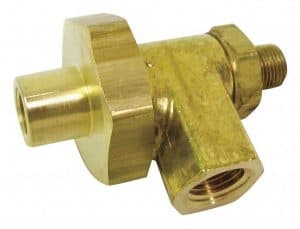What is the discharge valve function?
The discharge valve represents a device that regulates the flow of gases or fluid by partially or completely closing the passage through the pipe and managing the flow of a substance from a source via the circulatory system. Valves are for starting or stopping the flow, preventing or relieving backflow, regulating or throttling flow, and regulating pressure in fluid or gaseous handling applications.

A safety valve is a particular type of valve. Its purpose is to prevent the boiler from exploding if the pressure of steam or other medium exceeds a certain level. All devices prescribe gases and liquids under elevated temperature and pressure. In the house, it can be found in a boiler (water heater), for example. In case of excessive pressure, it opens by itself, causing the boiler’s steam pressure to drop to the permitted level, and the safety valve then closes again by itself.
When loading compressed gas, the liquid discharge valves should be opened. We should keep the liquid discharge valves on a compressed gas tank closed except when loading and unloading.
What should be the discharge capacity of the safety valve?
A “rule of thumb” sets the relief pressure 10% above the system’s working pressure. In supercritical steam pressure, the saturation temperature shall be raised to 375 degrees Celsius.
The thermal protection drain valve limits the temperature of the water in the boiler with a built-in heater or a heat exchanger for emergency interventions. For example, when the water temperature in the boiler reaches 95 ° C within given limits).
Additional Discharge valve function
The discharge valve is also used in construction settings. It is often a means of routing air or water through machinery used to manufacture goods. With the help of valves incorporated along with the system, it is possible to control the airflow to function at optimum efficiency. For example, most fire extinguishing systems within buildings use valves to control water flow if a fire breaks out. Sensors trigger the valves to open, releasing water into the area, then trigger the valves to close once the temperature within the space decreases as the flames are subdued.
Also, the Discharge valve needs no priming, which can deliver things at high or low pressure. It also works with the high-pressure range, enhancing the continuous rate of discharge of the material.
Intermediate discharge valves to control the natural pressure ratio on scrolls allow enlarging pressure ratio to the best performance zone on compressor/system application. This feature improves compressor performance in light summer conditions with mild ambient temperature.
- Facebook Ads to Get Followers! - December 27, 2024
- ClickUp vs. Slack - December 20, 2024
- Mastering E-Commerce Analytics: A Blueprint for Success





